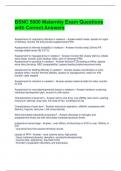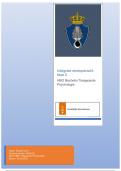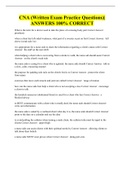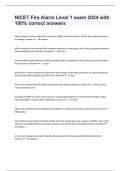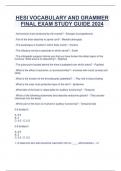Exam (elaborations)
BSNC 5000 Maternity Exam Questions with Correct Answers
- Course
- Institution
BSNC 5000 Maternity Exam Questions with Correct Answers Assessment for respiratory distress in newborn - Answer-watch feeds, assess for signs of distress, monitor O2 and provide supplemental PRN Assessment for thermal instability in newborn - Answer-monitor temp 30mins PP, manage stable temp ...
[Show more]
